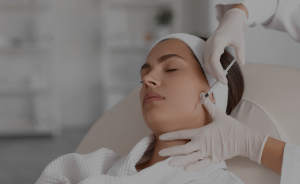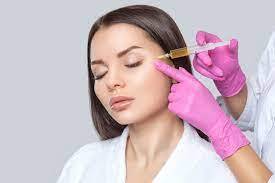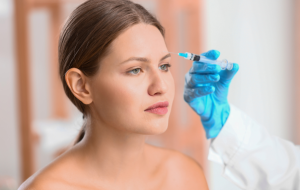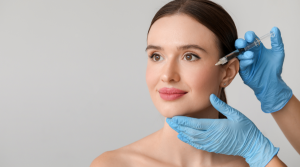Lip enhancement has become a popular cosmetic treatment for individuals looking to achieve fuller lips, correct lip asymmetry, or simply enhance their natural features. Lip fillers, particularly those made from hyaluronic acid, offer a non-surgical option to achieve these goals.
However, as with any cosmetic procedure, safety is a primary concern. In this blog, we’ll explore the safety of dermal fillers for lip augmentation, what to expect during the lip filler procedure, and how to determine if you are a suitable candidate for lip enhancement.
What is Lip Augmentation?
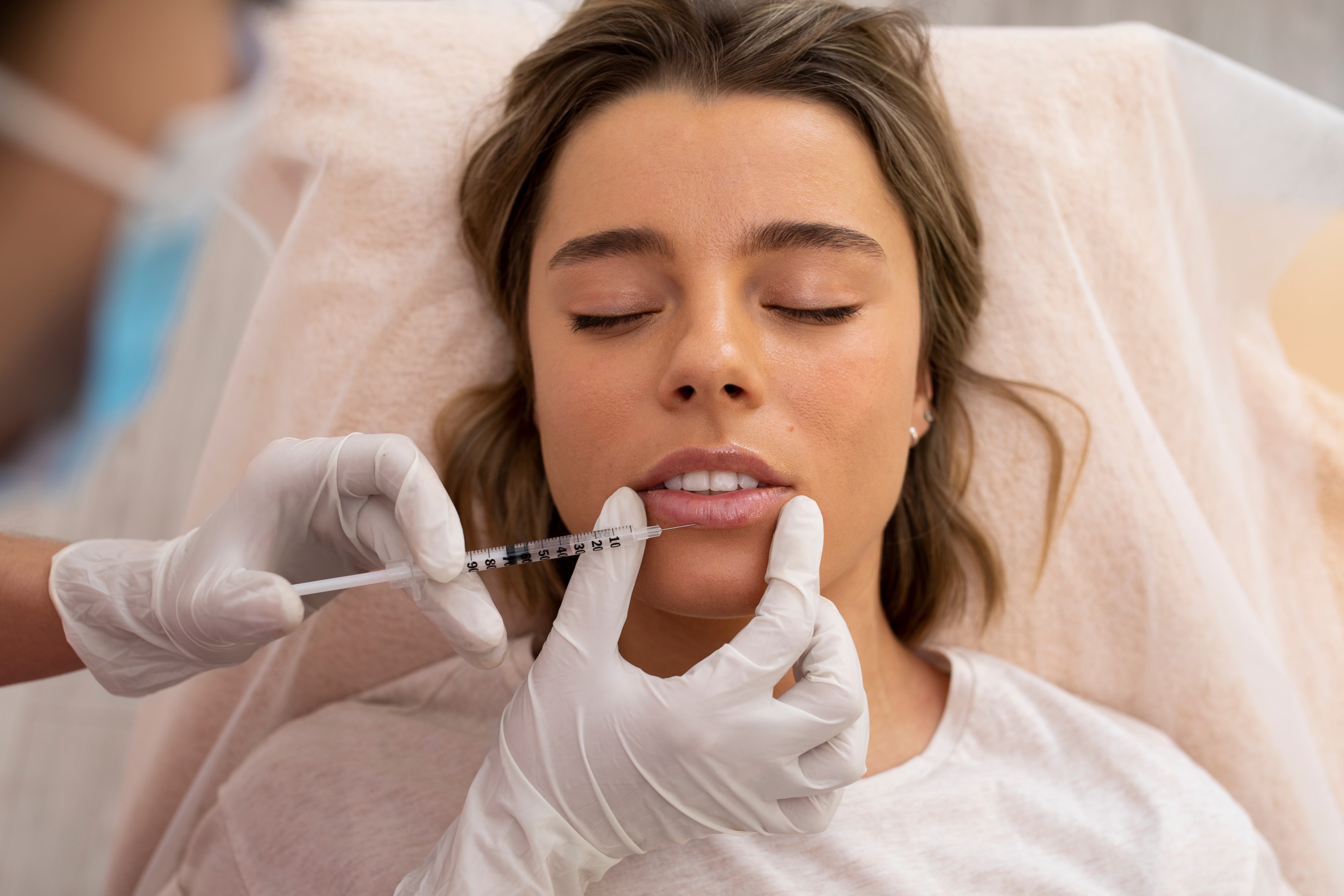
Lip augmentation is a cosmetic procedure designed to enhance the shape and size of the lips, creating a fuller and more balanced appearance. This can be achieved through various methods, including injectable dermal fillers, fat grafting, tissue grafting, lip implants, and lip-lifts.
The primary goal of lip augmentation is to create lips that are in proportion to the rest of the face, enhancing overall facial harmony.
Injectable dermal fillers, particularly those made from hyaluronic acid, are among the most popular options for lip augmentation. These fillers offer a non-surgical solution to add volume and shape to the lips, providing natural-looking results with minimal downtime.
For those seeking a more permanent solution, lip implants made from materials like silicone or Gore-Tex can be considered. Each method has its own set of benefits and considerations, making it essential to consult with a qualified professional to determine the best approach for your individual needs.
Types of Lip Fillers
When it comes to lip augmentation, there are several types of lip fillers available, each offering unique benefits:
Hyaluronic Acid Fillers
Products like Juvederm and Restylane are made from hyaluronic acid, a natural substance found in the body. These fillers are known for their ability to add volume and shape to the lips while maintaining a natural look. Hyaluronic acid fillers are also reversible, which adds an extra layer of safety.
Collagen Fillers
Derived from animal collagen, these fillers were once popular for adding structure and support to the lips. However, they have become less common due to the rise of hyaluronic acid fillers, which offer similar benefits with a lower risk of allergic reactions.
Fat Transfer Fillers
This method involves transferring fat from another part of the body, such as the thighs or abdomen, to the lips. Fat transfer can provide a natural and long-lasting enhancement, but it requires a more invasive procedure compared to other fillers.
Lip Implants
For those seeking a permanent solution, lip implants made from materials like silicone or Gore-Tex can be an option. These implants provide long-lasting results but involve a surgical procedure with a longer recovery time.
Each type of filler has its own set of advantages, and the best choice depends on your individual goals and preferences. Consulting with a qualified professional can help you determine the most suitable option for your lip augmentation.
Lip Fillers Before and After: What to Expect
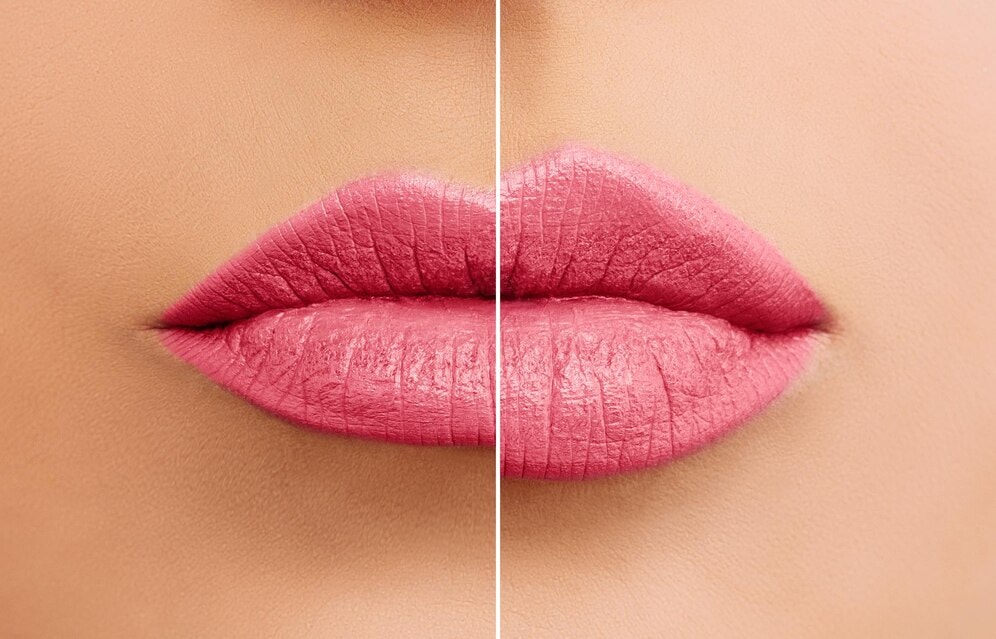
One of the most significant factors when considering lip fillers is understanding what the lip fillers before and after results will look like. This involves having realistic expectations about the changes that will occur and the final appearance of your lips.
Many people wonder, “Do lip injections hurt?” Techniques such as using microcannulae and applying topical anesthetics can make the procedure virtually painless, reducing discomfort compared to traditional needles.
Lip fillers are designed to add volume, shape, and structure to the lips. Lip fillers can provide noticeable improvements if you’re looking to enhance your cupid’s bow, add definition to your upper lip, or correct asymmetrical lips.
However, it’s important to understand that the final results may take a few days to materialize as any initial swelling and minor swelling subside fully.
The Lip Filler Procedure
The lip filler procedure typically begins with a free consultation where you discuss your goals and desired outcomes with a qualified professional.
During this consultation, the provider will evaluate whether you’re a good candidate to get lip enhancements, including lip augmentation, based on your medical history, current health, and expectations.
Before the lip filler injections are administered, a topical or local anesthetic is applied to the treatment area to minimize discomfort. The product injected is usually a hyaluronic acid-based filler, a natural substance found in the body that is well-tolerated and has a low risk of allergic reactions.
The entire procedure generally takes about 30 minutes. It is often called a “lunchtime procedure” because many people can fill their lips during a lunch break and return to normal activities shortly after. Lip fillers are administered using a fine needle, and multiple injection sites may be used to achieve the desired volume and shape.

Lip Fillers: Before and After Care
After receiving lip injections, minor swelling and bruising at the injection sites are normal. Natural lip filler treatments are particularly appealing for achieving natural-looking results.
Applying an ice pack to the lips can help reduce swelling. It’s also recommended to avoid eating hot foods, drinking alcohol, or engaging in strenuous exercise for the first 24 hours to allow the lips to settle and heal properly.
Care instructions typically include avoiding blood thinners and over-the-counter medications like aspirin or ibuprofen, which can increase bruising. Staying hydrated and drinking plenty of water are also important to support the healing process.
Are Lip Fillers Safe?
Safety is often the top concern for potential patients when considering lip augmentation. Dermal fillers, such as Juvederm Volbella and Restylane, are generally considered safe, especially when a qualified professional uses FDA-approved products like hyaluronic acid fillers.
However, as with any non-surgical cosmetic procedure, potential risks and side effects need to be understood.
The Role of Hyaluronic Acid in Lip Fillers
Hyaluronic acid is a natural substance found in the body that helps to maintain skin hydration and elasticity. Hyaluronic acid fillers are particularly beneficial for enhancing thin lips, providing a fuller and more youthful appearance.
When used in lip fillers, hyaluronic acid adds volume to the lips by attracting water to the area, creating a plumping effect. Because hyaluronic acid is biocompatible and gradually absorbed by the body, it is considered one of the safest options for lip augmentation.
Hyaluronic acid fillers are preferred for lip injections because they are reversible and can be dissolved with an enzyme called hyaluronidase if the desired results are not achieved or if complications arise. This reversibility adds an extra layer of safety to the lip filler process.
Potential Side Effects and Risks
While lip fillers are safe for most people, there are some potential side effects and risks to be aware of. Additionally, it’s important to consider the financial implications of these potential side effects, including the lip injections cost:
- Swelling and Bruising: Swelling and bruising are the most common side effects following lip injections. These are typically mild and resolve within a few hours to a few days.
- Allergic Reactions: Although rare, some individuals may experience an allergic reaction to the filler material. This is more likely with synthetic fillers, but the risk is lower with hyaluronic acid-based fillers.
- Lip Asymmetry: Lip asymmetry can occur if the filler is not evenly distributed. Choosing a skilled and experienced injector is crucial to minimizing this risk.
- Lumps and Bumps: Small lumps or bumps can sometimes form under the skin where the filler was injected. These can often be massaged out, but they may need to be dissolved with hyaluronidase in some cases.
- Infection: As with any procedure that involves injections, there’s a risk of infection, especially if proper aftercare isn’t followed. Signs of infection include increased redness, warmth, or fever blisters around the injection sites.
- Cold Sores: Lip injections can sometimes trigger an outbreak if you’re prone to cold sores or fever blisters. Your provider may recommend taking antiviral medication before and after the procedure to prevent this.
Who Should Avoid Lip Fillers?
While lip fillers are safe for most people, there are certain conditions where it may be best to avoid them. Additionally, financial considerations such as the lip filler cost should be taken into account for those who may not be suitable candidates:
- Active Infection: If you have an active infection in the lip area, you must wait until it’s fully healed before undergoing lip injections.
- Pregnancy and Breastfeeding: Limited research on the safety of lip fillers during pregnancy and breastfeeding suggests that they should be avoided.
- Allergies to Filler Ingredients: If you have a known allergy to any filler ingredients, you should avoid lip injections.

Benefits of Lip Injections
Lip injections offer numerous benefits, making them a popular choice for those seeking lip enhancement:
- Quick and Easy Procedure: Most lip injection procedures take less than 30 minutes to complete, making them a convenient option for those with busy schedules.
- Minimally Invasive: Unlike surgical options, lip injections are minimally invasive and do not require significant downtime. Most patients can resume their normal activities shortly after the procedure.
- Customizable: Lip injections can be tailored to meet the specific needs and preferences of each patient, allowing for personalized results that enhance the natural beauty of the lips.
- Natural-Looking Results: When performed by a skilled professional, lip injections can provide natural-looking results that are in harmony with the rest of the face.
- Long-Lasting: Depending on the type of filler used, lip injections can last several months. Hyaluronic acid fillers, for example, typically last six months to a year, providing a long-lasting enhancement.
These benefits make lip injections an attractive option for those looking to achieve fuller, more defined lips without the need for surgery.
Alternatives to Lip Fillers
For those who are hesitant about lip fillers or are not good candidates, there are several alternatives to consider for lip augmentation.
However, ‘lip filler toronto’ is a popular and effective cosmetic treatment in Toronto, known for its immediate aesthetic benefits and natural-looking results.
Lip Implants and Surgical Lip Augmentation
Lip implants are a more permanent solution for those seeking lip augmentation. Unlike dermal fillers such as Juvederm Volbella and Restylane, which are non-surgical, temporary, and require maintenance, lip implants provide long-lasting results. However, lip implants involve a surgical procedure and come with higher risks, including the possibility of implant rejection, infection, and a longer recovery time.
Another option is surgical lip augmentation, such as a lip lift or fat transfer. A lip lift involves removing a small amount of skin from above the upper lip to lift and enhance the upper lip‘s appearance. Fat transfer involves taking fat from another part of the body (like the thighs or abdomen) and injecting it into the lips. While these procedures offer permanent results, they also carry the risks associated with surgery and require a longer recovery time.
Non-Surgical Options
If you’re looking for a more natural way to enhance your lips without lip injections, consider options like lip balm with plumping agents, over-the-counter lip enhancers, or makeup techniques that create the illusion of fuller lips. Another natural alternative is the use of natural lip filler, which offers a safer and effective way to enhance your appearance.
Lip balm with plumping agents can temporarily enhance the appearance of your lips by increasing blood flow to the area, giving them a fuller look. While the results are less dramatic and long-lasting than lip fillers, they are a low-risk alternative.
Cost and Pricing
The cost of lip fillers can vary widely based on several factors, including the type of filler used, the location of the procedure, and the individual needs of the patient. On average, the cost of lip fillers ranges from $500 to $2,000 per syringe, with most patients requiring one to two syringes to achieve their desired results.
While the initial cost of lip fillers may seem high, it’s important to consider the long-lasting results they provide. Many clinics and spas also offer financing options and package deals to make lip fillers more affordable. In Toronto, for example, the cost of lip fillers typically ranges from $500 to $1,500 per syringe, depending on the type of filler and the clinic’s reputation.
Some of the best lip filler clinics in Toronto include SpaMedica, Toronto Plastic Surgery Center, and Sovereign Skin. When choosing a clinic, it’s crucial to do your research and select a reputable provider with extensive experience in lip augmentation. Be sure to ask about the cost and pricing of the procedure, as well as any available financing options or package deals.
By choosing a skilled and experienced provider, you can achieve natural-looking, beautiful results that enhance your lips and boost your confidence.

Wrapping it Up: Are Lip Fillers Right for You?
Lip fillers offer a safe and effective way to get lip enhancements, providing fuller lips, improved symmetry, and a boost in self-confidence. However, as with any non-surgical cosmetic procedure, it is important to weigh the benefits against the potential risks and side effects.
If you’re considering lip augmentation and want to achieve natural-looking, beautiful results, choosing a skilled and experienced provider is crucial. At Beauty Aesthetics in Toronto, our team of nurse injectors is dedicated to helping you achieve your aesthetic goals safely and effectively. We offer personalized consultations to assess your needs, discuss your options, and create a customized treatment plan.
Whether you want to enhance your lips, correct lip asymmetry, or simply explore your options, we invite you to schedule a free consultation. Our commitment to quality care, safety, and patient satisfaction ensures you’ll feel confident and comfortable throughout the procedure. With the right guidance and expertise, you can achieve the desired volume and shape for your lips while maintaining a natural and balanced look.
Frequently Asked Questions (FAQs)
Lip fillers typically last six months to a year, depending on the type of hyaluronic acid filler used and individual factors such as metabolism and lifestyle.
While lip fillers are generally considered safe, potential risks include swelling, bruising, infection, cold sores, and allergic reactions. To minimize these risks, it is important to choose a qualified provider.
Many people worry about whether lip injections hurt. However, with the use of microcannulae, which reduces discomfort compared to traditional needles, and the application of topical anesthetics, the experience can be virtually painless for patients.
Yes, if you are unsatisfied with the results, hyaluronic acid fillers can be dissolved with an enzyme called hyaluronidase. This allows for adjustments or complete removal of the filler.
The cost of lip fillers varies depending on the type used, the amount needed, and the provider’s expertise—the average cost ranges from $500 to $2,000 per syringe.

